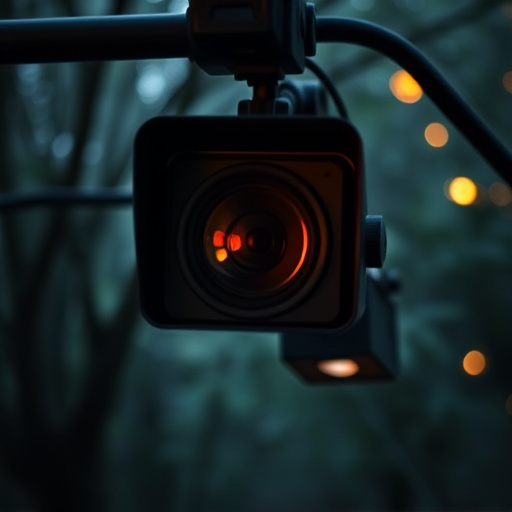Small hidden cameras, or spy cameras, have evolved to offer discrete bedroom surveillance solutions. Their compact design allows for creative placement, providing comprehensive room coverage without attracting attention. These cameras cater to privacy and security needs, from personal safety to theft prevention. Effective strategic placement, such as near entry points and in central areas, ensures thorough footage capture. Advanced detection methods like EMI detection tools and thermal imaging are essential to counter these covert devices, especially in sensitive spaces like bedrooms.
“Uncover the world of covert recording equipment, specifically focusing on small hidden cameras for bedroom surveillance. This comprehensive guide explores the intricate art of placement and detection, empowering individuals to make informed decisions regarding home security. From understanding the capabilities of these tiny yet powerful devices to mastering strategic placement techniques, this article covers all aspects. Learn about advanced detection methods and discover countermeasures to stay ahead in the game of protecting your personal space.”
- Understanding Small Hidden Cameras for Bedroom Surveillance
- Placement Strategies for Covert Recording Equipment
- Detection Methods and Countermeasures
Understanding Small Hidden Cameras for Bedroom Surveillance
Small hidden cameras, also known as spy cameras, have become increasingly sophisticated and compact, making them an attractive option for bedroom surveillance. These devices are designed to fit discreetly into the environment, often resembling everyday objects like smoke detectors, light switches, or even decorative items. Their small size allows for creative placement in hard-to-reach areas or behind furniture, ensuring a comprehensive view of the room without raising suspicion.
For those seeking privacy and security in their bedrooms, these cameras offer a non-intrusive solution. They can be easily installed with minimal disruption to the space and provide high-quality video footage. Whether it’s for personal safety, monitoring sleep patterns, or preventing theft, small hidden cameras for bedroom surveillance give homeowners a sense of control and peace of mind.
Placement Strategies for Covert Recording Equipment
When it comes to covert recording equipment placement, especially with small hidden cameras designed for bedrooms, strategizing is key to achieving effective surveillance. The goal is to position devices discreetly yet advantageously. For instance, placing a camera near windows or doors can capture entry and exit points, while a strategic view of the room’s center can document activities within.
Consider unique locations like behind pictures, inside clocks, or under furniture to avoid raising suspicion. The right placement ensures comprehensive coverage without appearing obtrusive. A skilled investigator understands that subtlety is paramount, making these tiny cameras powerful tools for gathering evidence in a bedroom setting.
Detection Methods and Countermeasures
Detection Methods and Countermeasures
The detection of small hidden cameras, particularly in sensitive areas like bedrooms, involves a range of sophisticated techniques. One common method is visual inspection, where individuals look for obvious signs such as lenses or unusual devices. However, many modern spy cameras are designed to be nearly invisible, integrating seamlessly into everyday objects like clocks, smoke detectors, or even picture frames.
To counter these clandestine devices, users can employ electromagnetic interference (EMI) detection tools that identify electronic signals from hidden cameras. Additionally, thermal imaging technology can reveal heat signatures that may indicate the presence of active cameras. Regularly updating security protocols and staying informed about emerging detection methods is crucial in staying ahead of potential covert recording equipment placement.
Small hidden cameras, particularly those designed for bedroom surveillance, offer a layer of privacy protection and peace of mind. By understanding their placement strategies and employing effective detection methods, users can leverage these devices’ capabilities while remaining aware of potential countermeasures. Whether for personal safety or home security, responsible use of covert recording equipment necessitates a balance between vigilance and respect for others’ privacy.
